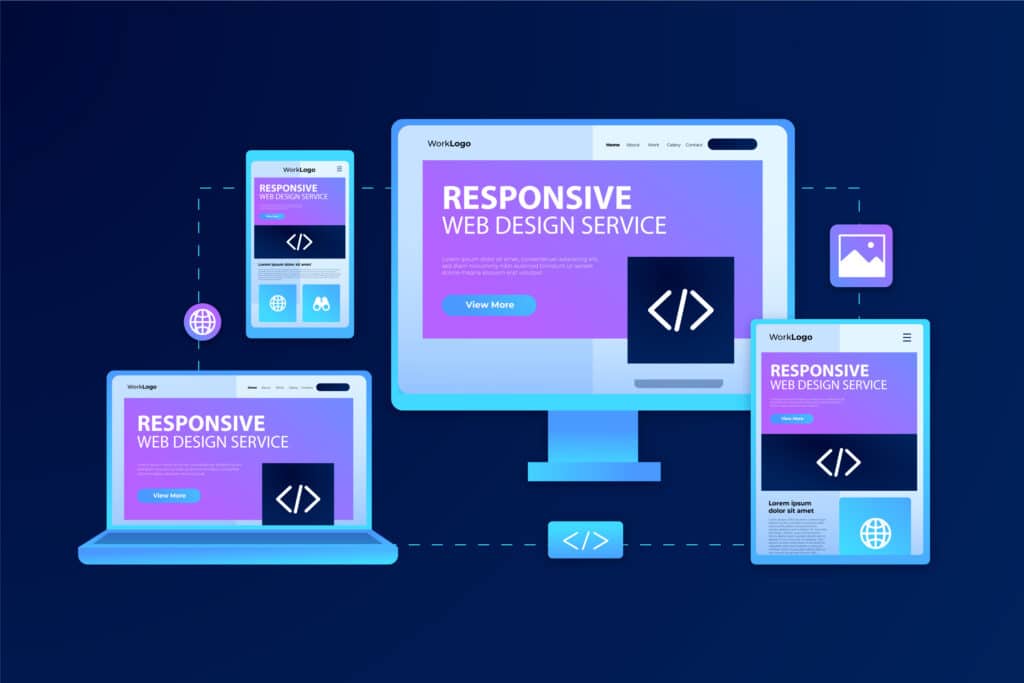Responsive Design Guide

Introduction
Responsive design is no longer a luxury it’s a necessity. In today’s digital-first world, businesses that want to attract, engage, and convert users need websites that adapt seamlessly to any device. A high-performing website is more than good looks; it’s about usability, accessibility, and speed.
In this blog, we provide an honest assessment of 10 important elements of a high-performing website with a bonus insight at the end. Whether you run an e-commerce store, a corporate site, or a personal blog, these strategies can help elevate performance and user satisfaction.
1. Responsive Design: The Cornerstone of Web Performance
At the heart of every high-performing website lies responsive design. A responsive website ensures that pages adjust seamlessly across desktops, tablets, and smartphones. Google prioritizes mobile-first indexing, meaning sites that fail at responsiveness risk lower rankings and poor user engagement.
Businesses using responsive design also benefit from reduced bounce rates, longer time-on-site, and higher conversion rates.
2. Fast Loading Speed
Even the most beautiful site will fail if it takes too long to load. Research shows 53% of users abandon a site that takes longer than 3 seconds to load. Tools like Google PageSpeed Insights help optimize performance.
3. Mobile-Friendly Navigation
Menus, buttons, and forms must be easy to use on small screens. Simplified navigation enhances user experience and keeps visitors engaged.
4. Clear & Compelling CTAs
High-performing websites use calls-to-action (CTAs) strategically. Whether it’s “Shop Now” or “Book a Demo,” CTAs should stand out and guide users toward conversions.
5. SEO Optimization
A great website is useless if no one can find it. Incorporating keywords, structured data, and proper meta tags ensures visibility. Combining SEO with responsive design doubles the impact by making sites both searchable and usable.
6. Secure (HTTPS) Browsing
Users trust secure websites. An SSL certificate not only protects data but also boosts credibility and SEO rankings.
7. Content Quality & Readability
High-performing sites focus on quality content—scannable, engaging, and optimized with multimedia elements. Blogs, case studies, and videos enhance authority and SEO.
8. Visual Hierarchy & Design Consistency
Consistent fonts, colors, and layouts build trust and ensure smooth navigation. A clutter-free, visually balanced design improves retention.
9. Analytics & Performance Tracking
Using Google Analytics, Hotjar, or other tools allows businesses to monitor bounce rates, session durations, and conversion funnels. Continuous optimization is key.
10. Accessibility Features
Websites should be inclusive for all users, including those with disabilities. Alt text, screen reader compatibility, and proper contrast ratios are essential.
11. Bonus: Future-Proofing with AI & Automation
Beyond responsive design, the future belongs to smart websites. AI-powered chatbots, personalized recommendations, and automated workflows can transform user experiences and increase ROI.
Honest Assessment: Challenges Along the Way
While responsive design and other elements provide a solid foundation, many businesses struggle with:
Lack of in-house expertise
High costs of redesigning older websites
Adapting to constant Google algorithm changes
Partnering with skilled developers or agencies can help overcome these hurdles.
Honest Assessment: Challenges Along the Way
While responsive design and other elements provide a solid foundation, many businesses struggle with:
Lack of in-house expertise
High costs of redesigning older websites
Adapting to constant Google algorithm changes
Partnering with skilled developers or agencies can help overcome these hurdles.
